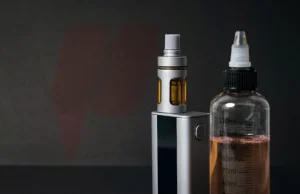Last month, the FDA together with the Department of Health and Human Services (HHS) launched this consultation in order to gather feedback on how to best regulate flavours. Echoing what Gottlieb said days earlier, the agency said it aimed to limit flavours’ appeal to adolescents, whilst considering the role that they are having in helping adult smokers take the leap from smoking to vaping.
In response to this, Attorney General of Iowa Thomas Miller, and four Public Health experts amongst whom renowned anti-smoking activists Clive Bates and David Sweanor, sent a briefing and letter to Dr. Gottlieb “that form a chain of reasoning that connect flavors to harms or, more likely in reality, to public health benefits.” The briefing goes as follows:
Briefing: Assessing potential harms and benefits arising from flavors in nicotine products
And here is the briefing… structured in the form of the ten questions below. The fully referenced version is here (PDF)
Is the flavor used in a combustible or non-combustible product?
Is the cause for concern an actual flavor or the way it is described (or both)?
Are all flavors, whole flavor categories or specific flavors the cause for concern?
How will the subset of flavors that have a particular role in attracting youth be identified?
Does a flavor preference create a change in behavior to increase e-cigarette use?
What is the behavior of concern and what is a distraction?
Would youth uptake of e-cigarettes caused by flavors be harmful or beneficial to health?
How are trade-offs between potential harms and potential benefits to youth addressed?
How will beneficial impacts for adults be reconciled with any potential impacts on youth?
What impact would a rulemaking intervention by FDA have?
Assessing potential harms and benefits arising from flavors in nicotine products
Following the 28 July announcement of FDA’s new nicotine strategy, publication of several Advanced Notices of Proposed Rulemaking (ANPRMs) is expected within months. These will provide a more detailed articulation of the strategy This memo discusses significant issues for consideration in the drafting of the forthcoming ANPRM on the role of flavored tobacco/nicotine products in attracting youth.
In articulating its strategy, FDA should be mindful of the real-world complexity governing potential harms and benefits of flavors. To that end, this memo sets out a possible framework for assessing harm and benefits as a series of questions below.
1. Is the flavor used in a combustible or non-combustible product?
Very different considerations are required depending on whether or not there is combustion. Flavored non-combustible products offer a ‘harm reduction’ pathway to smokers (or users who would otherwise smoke), and the appeal of such products may thereby create a benefit. No such benefit applies in the case of combustibles – and a completely different approach is required to analyze public health impacts and to define appropriate policy. Combustible and non-combustible flavored products should never be lumped together in policy considerations, given the pronounced variation in risk and the opportunity to substantially reduce health risks to people who would otherwise smoke.
The rest of this memo concerns flavors in non-combustible tobacco/nicotine products.
2. Is the cause for concern an actual flavor or the way it is described (or both)?
The first step is to identify the actual cause for concern and hence the possible the subject of rule-making. There are three potential options for regulation of flavors: (1) any properties of the flavor chemical that are harmful to health; (2) characteristics of the flavor itself (i.e. its sensory properties) that make the product inherently more palatable or appealing to younger people; (3) characteristics of the flavor descriptor (i.e. descriptive words or imagery – including trademarks or brand values from other products). We believe the first of these should beyond the scope of this ANPRM, but could managed through technical standards as required. For concerns about youth appeal, any rule-making initiative in this area requires a clear system for defining which flavor characteristics or descriptors are subject to regulation, and how a rule will define what is in scope and what is out of scope.
3. Are all flavors, whole flavor categories or specific flavors the cause for concern?
At one level, it is obvious that flavors play a role in all use of vaping products. If the products taste bad or are flavorless then few people will use them. But flavors are integral to vaping products – all products are flavored in some way, even if with a tobacco flavor. Supposedly ‘unflavored’ cigarettes are not flavorless, but taste of the thousands of chemicals in tobacco smoke. Every orally consumed tobacco/nicotine product is flavored in some way. Eliminating an essential component of vaping products (the flavor) would amount to a de facto prohibition of vaping products. Such action would run counter to FDA’s new nicotine strategy, which stresses the importance of the availability of low-risk nicotine products as alternatives to combustible cigarettes2. It follows that the question is how to identify a subset of flavors, with well-described selection criteria, that present concerns above and beyond simply making vaping products viable.
4. How will the subset of flavors that have a particular role in attracting youth be identified?
Commissioner Gottlieb stated: “I have real concerns about kids’ use of e-cigarettes […] especially those products marketed with obviously kid-appealing flavors”. But what constitutes an obviously kid-appealing flavor? It may be obvious what constitutes a flavor with childlike branding, but it is not obvious that such childlike flavors appeal to the adolescent population at risk. It is just as likely that adolescents are concerned with reinforcing their adult identity and will prefer flavors or branding reflecting adult values.
One option to identify youth-attracting flavors would be to focus on those that have the greatest proportion of sales to younger people. However, unless preferences are uniform across all age-bands, then there will always be a category that has higher youth uptake. How pronounced should the bias towards youth sales be before the flavor or category becomes a matter of concern? It is likely that adults would use more tobacco flavor, as most adult vapers will be current or former smokers. To account for this, should any assessment of youth-adult biases in flavor preferences be assessed net of tobacco flavor use? How disproportional to adult appeal/use must youth appeal/use be for a flavor to be considered a concern?
Much advocacy focusses on trademark names, such as Gummy Bear or Cotton Candy. Just because these flavors can be found on the internet somewhere, it does not mean they have a noticeable effect on population behavior. How should appeal of such flavors be characterized?
5. Does a flavor preference create a change in behavior to increase e-cigarette use?
While there might be flavors that are more or less attractive to youth, it requires an additional step to show that these flavors exert such a powerful attraction that they cause additional use of a product where there would otherwise be no use. At least one experiment suggests that flavors exert negligible attraction on non-users. In this study, when teenage subjects were asked to rate their interest in using e-cigarettes on a scale of 0-10 when offered in a list of flavors, they reported minimal interest, reaching an average interest score of only 0.41 out of 10.
It is possible for a person’s decision to try vaping to be made for different reasons (to bond with friends, to try something other than smoking) and the choice of flavor is a secondary or lower consideration – much as the decision to go out for a meal with friends may not be caused by desire for a particular item on the menu. For example, Ambrose et al offer a widely cited analysis of PATH survey data in which young people who already vape are asked their reasons for product use. This includes the option: “(It) comes in flavors I like,” for each tobacco/nicotine product. But an affirmative answer to that question will have been a trivially obvious response for many – who would use a product with a flavor they did notlike? The question does not identify specific flavors of concern, so it is referring to an integral feature of the product, without which the product would have no appeal. Yet this study is frequently cited as justification for intervening to restrict flavors to protect youth.
6. What is the behavior of concern and what is a distraction?
If flavors are playing a role in changing behavior, it is important to be clear what defines a harmful risk behavior worthy of significant intervention and possible trade-offs with other objectives such as adult smoking cessation. Data suggests much adolescent e-cigarette use is experimental and occasional and, as such, poses minimal risk. The National Youth Tobacco Survey for 2014 showed that 74 percent of high school students who were using e-cigarettes used them on less than ten days in the month preceding the survey, 45 percent on only 1-2 days, with less than 10 percent being daily users. Furthermore, the more regular e-cigarette use is strongly concentrated in smokers. As Ken Warner puts it: Non-smoking high school students are highly unlikely to use e-cigarettes; among those who do, most used them only on 1–2 of the past 30 days. The headline prevalence figures for adolescent e-cigarette use are based on any use in the past 30 days. As a result, the headline figures conceal and merge very different behaviors: regular use and experimentation. Regular e-cigarette users are mostly smokers and already at risk.
A further complication is that many adolescents vapers report mostly using e-cigarettes without nicotine and therefore without the key dependence-forming agent. The Monitoring the Future Survey found that only 20 percent of 12thgraders reported using e-cigarettes with nicotine. Again, the youth e-cigarette statistics that drive public and political concern are ‘contaminated’ by the inclusion of very different behaviors.
When gauging the scale of potentially problem vaping behavior, we should focus on regular or daily use of nicotine-based products – a small subset of the total. Even among this group, it cannot be assumed that the vaping behavior is problematic – it may be or become an alternative to smoking. This is the subject of the following section.
7. Would youth uptake of e-cigarettes caused by flavors be harmful or beneficial to health?
If it is assumed that: (1) it is possible to identify flavors that are attractive to youth and (2) to show that these flavors change behavior – increase regular nicotine use or cause initiation – it is then necessary to establish (3) whether the change in behavior is harmful or beneficial. What if the behavior change prompted by an appealing flavor was to divert a young person from smoking to vaping? Given that regular vaping is concentrated in smokers, this is a distinct possibility.
A reanalysis of the PATH data considered by Ambrose et al2, showed that harm-reduction (to self and others) motivation was the most important reported reason for using e-cigarettes, cited by 88% of the young people surveyed. Moreover, almost all the youth who cited the availability of flavors as a motive for e-cigarettes use also cited harm reduction as a motive. The authors remind us that “Teens commonly endorse multiple reasons for using e-cigarettes, rendering the analysis of motives complex”. It is quite possible to conclude from this data that palatable or even enjoyable e-cigarette flavors assist with realizing the primary motivations to reduce harm or quit smoking. In other words, the flavors contribute to a health benefit in youth.
This raises the challenge that harm-reduction motivations may apply to e-cigarette use by young people under 18 years and their use of e-cigarettes may be beneficial. There is also the plausible hypothesis that, whatever the motivation, teenage vaping has played a contributory role in the rapid decline in teenage smoking witnessed in the United States since 2010 . In this case, enhanced appeal of the e-cigarette products may be supporting the displacement of cigarette initiation or consumption with e-cigarette use, which is a much lower risk behavior. Before flavors are denounced as increasing teenage e-cigarette use, it is important to have a sense of the counterfactual: what would have happened in the absence of e-cigarettes? Would young vapers simply have smoked? That e-cigarettes can substitute for smoking among youth is supported by convergent results of independent analyses showing that regulations limiting access to e-cigarettes increase youth smoking .
8. How are trade-offs between potential harms and potential benefits to youth addressed?
It is possible that some youth use of e-cigarettes occurs among youth who would not otherwise have used tobacco or nicotine. In this case, there is a behavioral pathway leading to a potential net harm to health, if trial converts into persistent long-term use. It is also possible that some youth e-cigarette use will be an alternative to smoking, in which case there is a pathway leading to a health benefit. It is possible to construct a far more complex model than this two-pathway example. Leaving aside adults at this stage, the net health effect on youth will be a function of how many young people follow each of these pathways and what the net harm or benefit to them would be in each pathway. Kozlowski and Warner warn that fears that e-cigarettes will serve as a net ‘gateway’ to smoking are exaggerated and could undermine the much larger potential for discouraging smoking in the whole population.
Given that it is unlikely that vaping risk exceeds five percent of smoking, and given that regular e-cigarette use is concentrated in young people who smoke or have a high propensity to smoke, then it is highly unlikely that this calculation of trade-offs will resolve showing net harm, and it is much more likely it will show net benefit. Simulation modeling with sensitivity analyses that examine all the state and transition pathways shows that the gateway effect would have to be implausibly large to increase the net public health harm.
9. How will beneficial impacts for adults be reconciled with any potential impacts on youth?
A 2017 assessment suggest that e-cigarettes are likely having a positive (i.e. downward) effect on adult smoking prevalence, which has been falling rapidly, via an increased smoking cessation rate
Conclusion The substantial increase in e-cigarette use among US adult smokers was associated with a statistically significant increase in the smoking cessation rate at the population level. These findings need to be weighed carefully in regulatory policy making regarding e-cigarettes and in planning tobacco control interventions.
Further, we know that adults make extensive use of non-tobacco flavors, including fruit and candy, even though these may be considered childish, or even ‘kid-appealing’. One study found 68 percent of American adult e-cigarette users had used non-tobacco flavors in the past 30 days. Of these, 45 percent had used fruit, 44 per cent menthol or mint, and 26 per cent candy, chocolate or other sweet flavor.
We argue above that there are unlikely to be net harms to youth arising from e-cigarette use. However, if it were somehow shown there are net harms to youth, then how should these be traded off against potential substantial gains in the adult population? Again this would require assessment of behavior-change pathways induced by the flavored product, in adults as well as youth. Some evidence suggests that the availability of non-tobacco flavors helps some adult smokers transition completely away from smoking and to the much safer practice vaping. As above, it is likely that benefits to people already smoking, or at high risk of smoking, would greatly outweigh risk from additional uptake of vaping.
10. What impact would a rulemaking intervention by FDA have?
In this complex landscape of multiple behavioral pathways how will it be possible to assess unintended harmful consequences of a policy designed to reduce the appeal of e-cigarettes? In fact, that question should be applied to several FDA interventions, including the Real Cost campaign, which will now target e-cigarettes or the regulatory burdens created by the deeming rule.
It is unclear how FDA could design interventions that only address (minor) harms without compromising the likely (substantial) benefits. It would first need to know the disposition of harms and benefits attributable to flavors (as discussed in 2-9 above). Then it would need to assess how a flavor-related intervention would modify the behavior, and the patterns of harms and benefits. Then it would need to be confident that its intervention would reduce harm rather than increasing it. This is exactly the sort of assessment, analysis, and modeling that FDA demands of companies applying to market new tobacco products or make modified-risk claims for products. We have seen little to suggest FDA or the advocacy community urging action on flavors is remotely close to being able to make that assessment.
Regrettably, the 2016 U.S. Surgeon General’s report on youth and e-cigarettes did not engage with the complexities set out above, and therefore cannot provide helpful scientific orientation to policymakers.
12 December 2017
Read Further: The Counterfactual













“Regrettably, the 2016 U.S.
Surgeon General’s report on youth and e-cigarettes did not engage with
the complexities set out above, and therefore cannot provide helpful
scientific orientation to policymakers.”
Excellent.